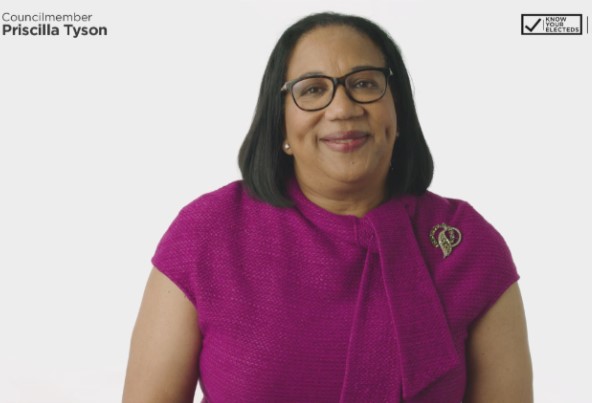
27 Oct Councilmember Tyson leads Commission offering Several Recommendations to Improve the Quality of Life of Black Girls
COMMISSION ON BLACK GIRLS ROLLS OUT REPORT
[COLUMBUS, OH] After two years of work, countless hours of public testimony, a survey focusing on Black Girls ages 11-22, and listening sessions, the Commission on Black Girls released the report outlining its findings and next steps to ensure Black girls in Columbus have equal access to opportunities for success.
“We took this journey to address the racial inequities that Black women experience in our community, said Councilmember Priscilla Tyson, founder of the Commission. “We want to change the life trajectory of Black women; therefore, it was necessary to begin with the early stages of development in Black girls’ lives to create opportunities to improve their futures.”
On July 16, 2018, Columbus City Council adopted resolution number 0208X-2018 to create the Commission on Black Girls. The Commission was charged with studying the quality of life of Black girls (ages 11-22 years old) in Columbus and Central Ohio. Further, the Commission was established to develop and implement recommendations to ensure opportunities, prosperous futures, and the attainment of a high quality of life is realized for all Black girls.
Dr. Frederic Bertley President and CEO of COSI and Frances C. Frazier of Rise Sister Rise serve as co-chairs for the Commission.
“It is an honor to support and co-chair, with Ms. Fran Frazier and the 24 other Commissioners, Councilmember Tyson’s Commission on Black Girls,” said Frederic Bertley, President and CEO, COSI Co-Chair, Commission on Black Girls. “This work and approach of examining the real-time status and condition of Black girls is not only precedent setting, but the Commission’s process and product represents a necessary blueprint for urban cities across this country.”
Researchers developed a survey that engaged more than 400 young girls and convened focus groups to assess the perspective of girls on their quality of life. The researchers focused on three quality of life indicators: economics, academics, and emotional health and well-being. Information was also compiled from listening sessions. These sessions allowed commissioners to hear from service providers, parents, caregivers, and girls between the ages of 11-22.
“The outcome of this important work is a series of recommendations that can and should be acted on to address important issues related to Black Girls, whose condition – mental health, physical health, education and economic agility and stability is indeed relevant to all Americans,” Bertley continued. “I commend Councilmember Tyson on having the courage and fortitude to take on this bold but necessary initiative. Black girls in Columbus will be better for it. Columbus, Ohio, and the nation will be better for it.”
In addition, The Commission hosted monthly meetings where they heard presentations from subject matter experts on topics such as physical health, behavioral health, education, juvenile justice, child welfare, social media, programs for Black girls and more.
Information received through the research and fact-finding efforts were used to inform the next steps. There is one overarching recommendation, three strategies and eighteen recommendations.
OVERARCHING RECOMMENDATION
The Commission on Black Girls will evolve from its current two-year temporary status into a permanent entity. The Commission will focus on engaging the community to implement the strategies and recommendations proposed in this report. The input collected and presented in this report will serve as the basis of launching the establishment of the permanent Commission as a data-driven center of excellence to positively transform the quality of life outcomes for Black girls in Columbus and Central Ohio.
- Strategy #1: Create an environment that is free of racism that impairs the ability of Black girls to see themselves and be seen in a manner that fosters their ability to develop and maintain positive quality of life perspectives to the same extent as their non-Black peers.
- Strategy #2: Create and strengthen holistic, systemic approaches to address and disrupt pervasive cycles of education, health, and economic, societal inequities that adversely impact the progress of Black girls toward their individual quality of life goals.
- Strategy #3: Advocate for resources and initiatives to enhance the successful quality of life pathways for Black girls.
Many of the recommendations address: education, mentoring and leadership, healthcare, safety, racism and bias training, health and well-being, economics, issues experienced by LGBTQ+ youth and families and youth in the child welfare system.
“The work of the Commission on Black Girls, led by Councilmember Tyson, is a testament to the important work ahead to fight racism and sexism,” said Council President Shannon G. Hardin. “I look forward to supporting this effort as we work to level barriers to opportunity with our black girls.”
To view the report visit Columbus.gov
